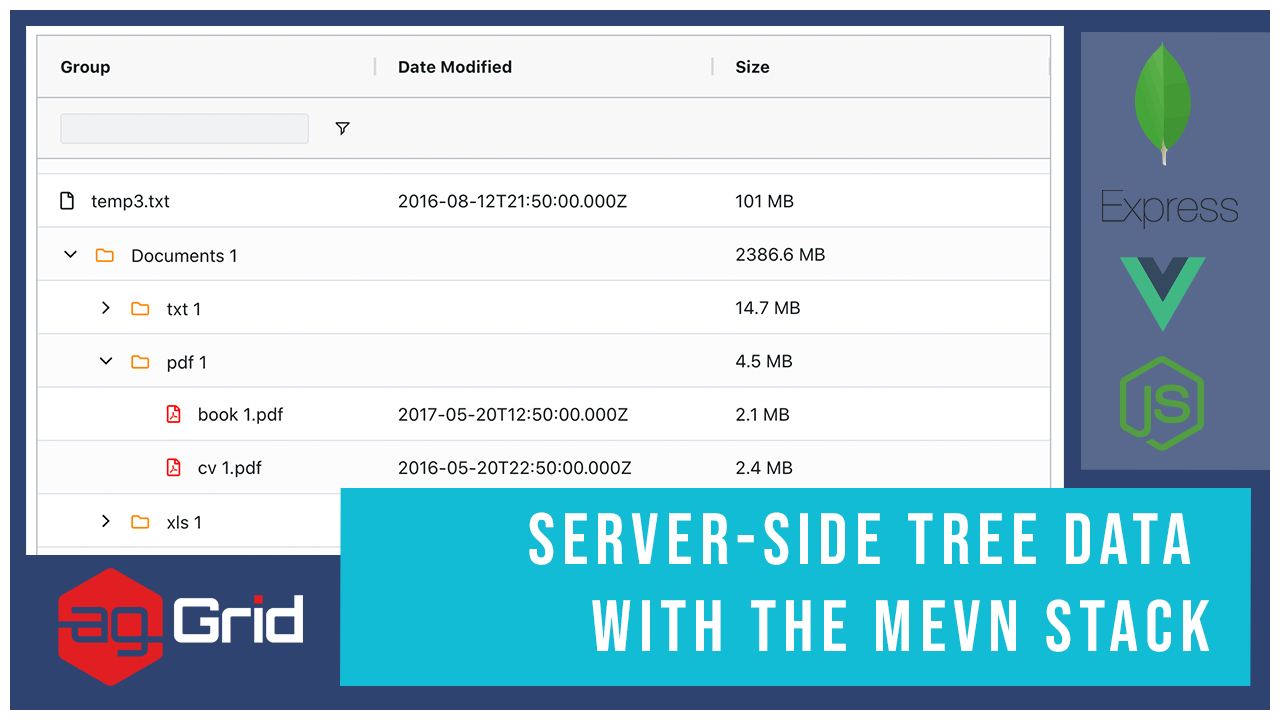
In most big dataset use case scenarios, users aren’t sure where their desired data resides - so they are typically searching/sorting/filtering data first, then scrolling through to sections of the filtered data as they narrow down on the relevant data section. When massive data needs to be displayed and analyzed, implementing paging or a no scroll bar type of grid is just not practical. Users can smoothly scroll to the end of the grid as the grid knows about the total amount of data but intelligently loads the right amount based on the data being requested. The scroll bar size visually reflects the total amount of data. Virtual Scrolling: Users can seamlessly navigate through the entire grid. It’s infinite, and as the user scrolls, more data is loaded and the scroll bar grows. The scroll bar size does not visually reflect the complete amount of data available. Data pages are loaded when the scroll bar reaches the end of display. Infinite Scrolling: Users can navigate through pages without specifying which ones. Grid retrieves the requested pages of data and displays them. Paging: Users can scroll through a page at a time or through a range of specified pages to retrieve information. Vendors use scrolling terms interchangeably, so I’d like to take a minute to go over what each feature really means and which one was used for this analysis. (Chrome and Safari are the most popular browsers and dominating the market) Grid Scrolling Methodsīefore jumping into the results, it’s important to quickly distinguish between the different types of server-side scrolling.
Ag grid competitors windows#
Measurements were taken on a Windows 64-bit OS (Intel(R) Core i7-6600U CPU 2.6GHZ, 8 GB RAM) using Chrome browser Version. Scrolling speed - How long does it take to scroll through various portions of the grid (eg: first few entries, scroll through a certain section of the grid and back up, mid grid and up a few entries, scroll to end of grid etc.)Įxperiments were conducted on server-side data containing small (10,000), medium (100,000) and large (1 million+) datasets (number of rows).įor each vendor, their respective Grid Infinite/Virtual Scrolling capabilities were used to gather the metrics. Initial Load Time - How long does it take to load the initial set of static data.įiltering speed - Time to dynamically filter on a field (eg: characters in a name). The data grid performance was measured on 3 main metrics. Interesting? Let’s dive deeper into the experiment details and how the measurements were conducted. Data grids provide different scrolling experiences but efficiently implemented virtual scrolling feature retrieves and displays large data requests within a second vs minutes for certain grids as observed in this experiment. Test results indicate that while most grids do equally well with initial static load time and dynamic filtering speeds, Ext JS and DevExtreme data grid outperformed other competitors on scrolling performance when tested with medium to large datasets (100,000 to 1,000,000+ data volumes).Įxt JS was observed to be over 300x faster than other leading data grid vendors.Īlthough other metrics are important, scrolling performance is a key indicator of grid stability given a user’s frequent need to scroll through huge amounts of filtered data. We’ll work backwards for a change, let’s see the results first and then look into the experiment details. The performance evaluation was based on how an end-user would actually use the grid in the field and this post outlines the benchmark metrics, setup and results.

To answer this question, we got into the trenches and ran performance tests comparing popular data grids on the market. Today, there are many data grid offerings in the market but how many of them can withstand the true test of performance as it relates to “Big Data”?

As a result, modern JavaScript data grid components that manage the display and analysis of these massive data volumes have evolved. The overall volume of generated data has grown exponentially over the past couple of decades.


 0 kommentar(er)
0 kommentar(er)
